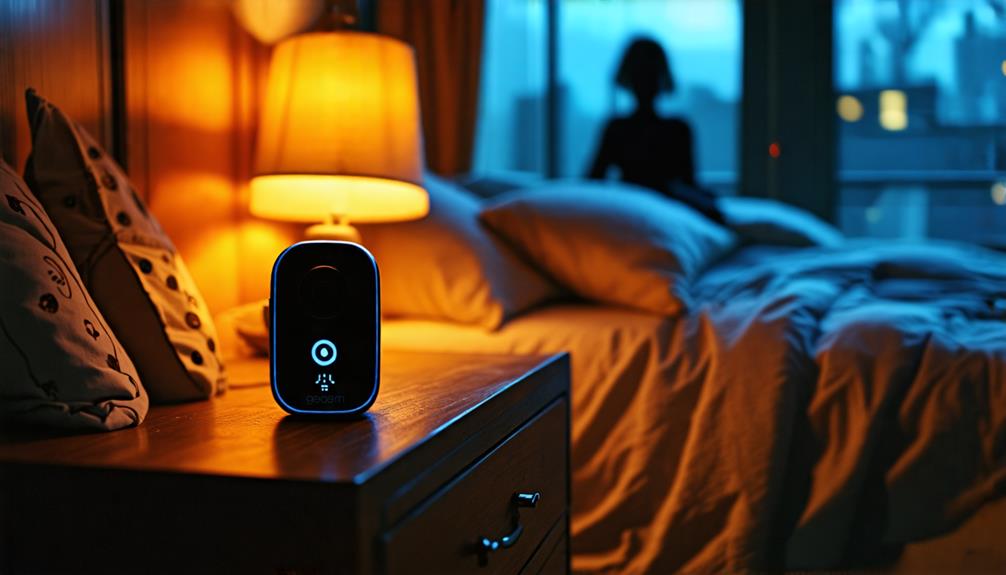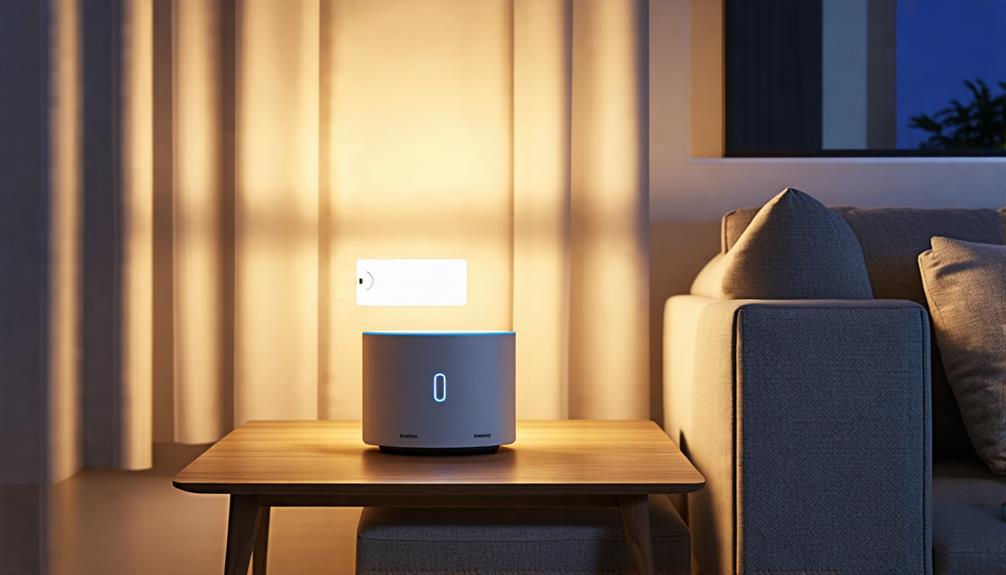
Brainstorm Security Shop

For Orders Over $199

On Any Of Our Products

Details On Refund Page
When you’re considering ramping up your home security, a barking dog alarm can be a surprisingly effective deterrent. These devices, like the Barking Dog Alarm From Brainstormsecurityshop.com mimic the aggressive bark of a large dog when triggered, making them a less conventional choice but often just as intimidating as more traditional alarms. What’s crucial, though, is selecting a model that doesn’t just sound realistic but also integrates seamlessly with your home environment and lifestyle. You might wonder how these devices stack up against each other in real-life scenarios, especially in terms of reliability and pet-friendliness. Let’s explore what sets the top contenders apart.
When selecting the best barking dog alarm, consider key features like volume control, sensitivity settings, and power options.
You’ll want an alarm that isn’t just loud but can also adjust its volume based on your specific needs. This flexibility ensures the alarm is effective without being excessively disruptive.
Sound sensitivity is another critical factor. A high-quality alarm can distinguish between everyday noises and potential threats, reducing false alarms significantly.
Look for models that let you customize sensitivity levels. This means the alarm won’t go off every time your neighbor’s door slams or a car passes by, but will still alert you to unusual activities.
Pet compatibility is essential if you have animals at home. Some alarms are designed to ignore the sounds made by your pets, which helps prevent unnecessary stress both for you and your furry friends.
This feature relies on differentiating between the frequencies of human and animal sounds, ensuring that your pet’s movements don’t trigger the alarm.
Lastly, consider the power options. Alarms that offer both battery and AC power provide greater versatility and reliability.
You won’t have to worry about the alarm failing during a power outage if it can also run on batteries.

Now that you understand the features to consider, let’s explore the top overall picks for the best barking dog alarms.
You’ll find an essential features overview that highlights what makes each model stand out.
We’ll also compare the top models to help you decide which is the perfect fit for your needs.
Understanding the essential features of top-rated barking dog alarms can significantly enhance your home security system. When you’re searching for an alarm that mimics dog behavior accurately, it’s crucial to look at how advanced the alarm technology is.
These alarms not only deter potential intruders but also create a sense of presence in your home, making it seem like a vigilant dog is always on guard.
Here are the key features you should consider:
Lastly, the SentryHound Pro, while having moderate barking accuracy, includes a glass break sensor and a powerful siren, providing a comprehensive security solution beyond just barking alarms.
Each model addresses different security needs, ensuring you’ve got options tailored to your specific requirements.
While safety is paramount, you don’t need to spend a fortune to protect your home effectively. There are numerous budget-friendly options in barking dog alarms that offer dependability without breaking the bank.
By focusing on affordable brands and heeding user recommendations, you can find a solution that fits both your security needs and your budget.
Here’s a quick rundown of some key points to consider when shopping for a cost-effective barking dog alarm:
Setting up your barking dog alarm is straightforward and doesn’t require professional help.
First, decide on the location. You’ll want to place your device where it can best detect motion, ideally near entry points like your front or back door. Once you’ve chosen the spot, installation is a breeze thanks to the device’s wireless connectivity. There’s no need to mess with complex wiring or drill holes in your walls.
Next, it’s time to configure the settings. Your alarm likely comes with a manual that details how to sync it to your home Wi-Fi network. Follow the instructions to connect, ensuring your device can communicate seamlessly with any other smart home systems you might have.
With wireless connectivity, you can usually control the settings directly from your smartphone, choosing when and how the alarm reacts to motion.
Lastly, test the motion detection feature to make sure it’s properly calibrated. Walk past the sensor to see if it triggers the barking sound. Adjust the sensitivity settings if needed until you’re confident it reacts appropriately.
Your barking dog alarm’s effectiveness and reliability largely depend on its technology and placement. When you’re relying on such a device to enhance your home security, understanding how it mimics real dog behavior and how sensitive it’s to intruders is crucial. This isn’t just about noise; it’s about smart alarm activation that deters unwanted visitors effectively.
Here are some key factors that influence the performance of your barking dog alarm:
As you explore customer reviews, you’ll gain valuable insights into user experiences with various barking dog alarms.
These reviews shed light on how well these products actually perform and highlight any common issues you might encounter.
This feedback is crucial for making an informed decision about which alarm best suits your needs.
Examining customer reviews provides invaluable insights into the real-world performance of the best barking dog alarms.
As you dive into user feedback, you’ll notice common themes that can help you make a more informed decision on which product might suit your needs best. Users often highlight several critical aspects, from sound sensitivity to ease of use.
Here’s a quick rundown:

Diving into customer reviews sheds light on how various barking dog alarms stack up in everyday use. You’ll find that sensor sensitivity and barking frequency are key factors that significantly determine user satisfaction.
For instance, some alarms are praised for their high sensor sensitivity, catching the slightest motion and effectively mimicking the vigilant bark of a dog. This feature can give you a sense of security, knowing it reacts promptly to potential intruders.
However, not all products perform equally. While reviewing, you’ll notice that optimal sensor sensitivity varies; some users prefer a more sensitive alarm that reacts to all movements, whereas others find that too high a sensitivity leads to frequent false alarms, disrupting the household.
The barking frequency also plays a crucial role. Alarms that offer adjustable barking frequencies allow you to tailor the response based on the situation, which can be more effective and less annoying.
Users often appreciate this adaptability, as it provides flexibility and control over how the alarm behaves, ensuring it’s loud and frequent enough to deter intruders but not so overly active that it becomes a nuisance.
Customer feedback frequently highlights a few recurring issues with barking dog alarms that you should consider before making a purchase.
Users often report that understanding the range and limitations of barking triggers can significantly impact satisfaction. You’ll find that noise sensitivity is another critical aspect often brought up.
Here are the main concerns shared by customers:
You’ll want to weigh these factors carefully to ensure the alarm fits your specific needs and environment.
While a barking dog alarm can significantly boost your home security, it’s crucial to implement additional measures to ensure you’re fully protected.
Don’t overlook the benefits of joining or starting a neighborhood watch. This community-based effort fosters a network of vigilant neighbors who can keep an eye out for suspicious activities and support each other. Participation in such a group enhances the collective security of your area, making it harder for intruders to go unnoticed.
Moreover, consider pet training if you have a real dog alongside your barking dog alarm. Well-trained pets aren’t only better behaved but can also play a significant role in your home’s defense strategy. Training your dog in basic commands or even advanced protective behaviors adds an extra layer of deterrence and safety.
Ensure your exterior lighting is adequate as well; intruders typically shy away from well-lit homes. Installing motion sensor lights can be particularly effective.
Additionally, regularly check that all doors and windows are secure and consider upgrading locks if necessary. Security isn’t just about having the right tools but also using them wisely and maintaining them properly.

You might be wondering if devices can tell the difference between human and animal movements.
Generally, barking dog alarms use motion detection and sound recognition to activate. However, they aren’t always able to distinguish between the two.
You’ll find that while they’re great for general security, their sensitivity settings mightn’t be fine-tuned enough to differentiate effectively between a person walking by and a small animal scampering across your yard.
Yes, there are wireless barking dog alarms available.
These alarms use advanced wireless technology to monitor your property effectively. Without needing complex installation, they’re easy to set up and use.
The alarm features include sensitivity adjustments to better distinguish between usual activities and potential threats.
You’ll find this system particularly useful if you’re looking to enhance your home security without the continuous upkeep of traditional security systems.
You’re wondering if barking dog alarms still function during power outages?
Yes, many models are designed with backup batteries to ensure they remain effective.
Users often compare their reliability favorably against other systems, especially in outage scenarios.
Experiences shared by users highlight that these alarms provide a consistent level of security, alerting you even without main power, making them a reliable choice in ensuring home safety during unexpected power failures.
You might wonder if barking dog alarms are suitable for homes with pets.
Generally, these alarms don’t harm pets, but their effectiveness and impact on pet anxiety vary.
Some dogs might become stressed hearing the recorded barking, mistaking it for a real threat.
It’s crucial to monitor your pet’s reaction and adjust the use of the alarm accordingly to ensure it doesn’t negatively affect their well-being or stress levels.
Yes, you can integrate the alarm with your existing smart home system.
Many models offer smart home compatibility, allowing you to connect through WiFi or Bluetooth.
Check the alarm integration features before purchase to ensure it matches your system’s requirements.
This way, you’ll be able to control and monitor the alarm remotely, enhancing your home security seamlessly with your current setup.
Always verify compatibility to avoid any connectivity issues.
In choosing your barking dog alarm, consider features that suit your needs like volume control and sensitivity settings. The GuardDog 500 and BarkAlert X2 are top picks for their realism and effectiveness. For budget-conscious buyers, there are affordable options that still offer reliable security. Installation is generally simple, and the reliability of these alarms is high, as echoed in customer reviews. Don’t forget to complement your alarm with other security measures for the best protection.

Brainstorm Security Shop
1867 Caravan Trail
Ste 105
Jacksonville, FL 32216
Call us toll free: (800) 859-5566